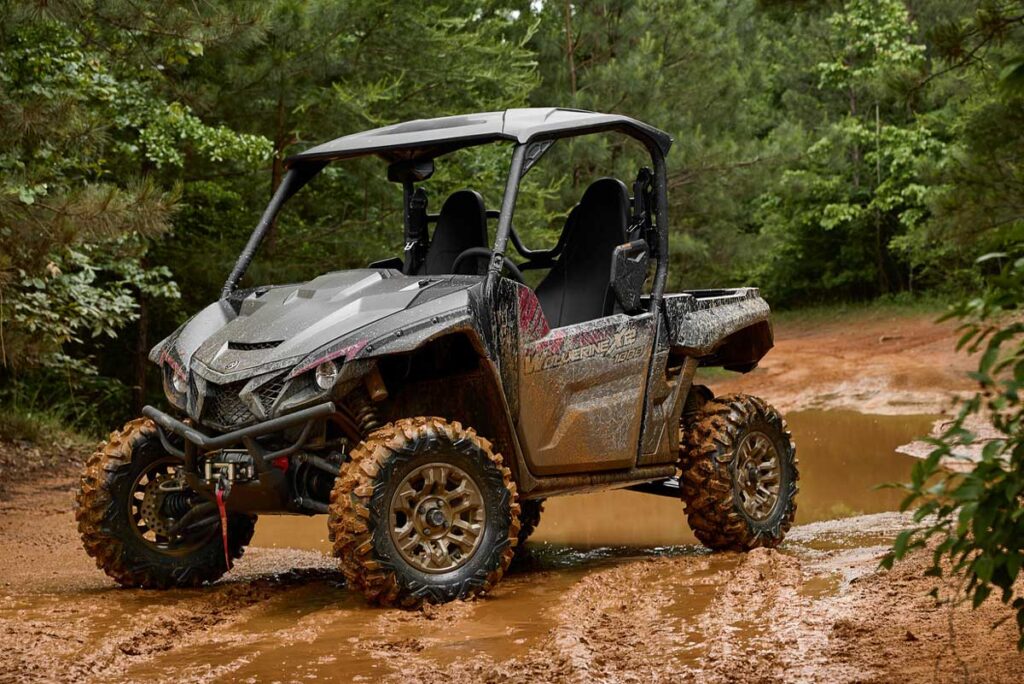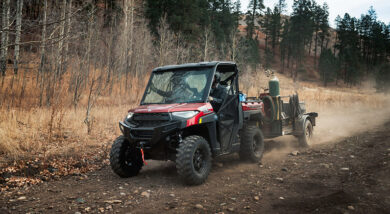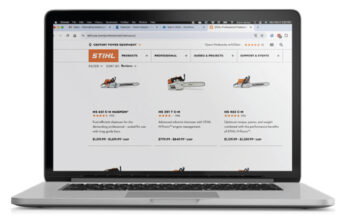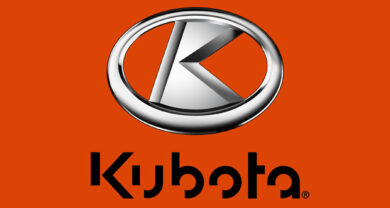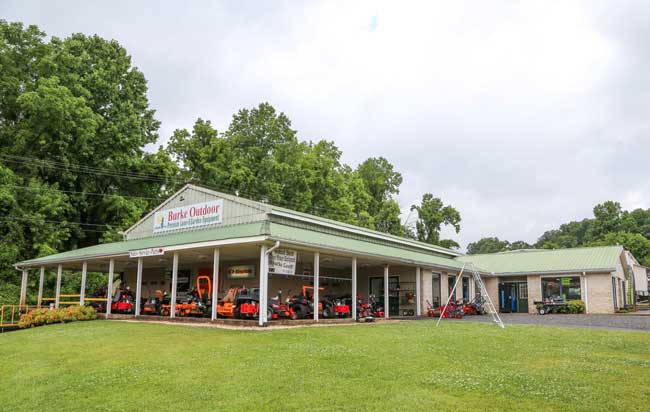UTV market research shows sales slump
The North American UTV market in 2022 dropped in volume by -5.6% to just under 550,000 units – the second straight year the market has experienced a downturn following 10 years of growth, according to research performed by Minneapolis-based research firm Power Products Marketing (PPM), which keeps an eye on the market, producing an annual database and associated report that define trends.
Initially a vehicle delegated to commercial uses – industrial, construction, turf maintenance, etc. – UTVs found favor with consumer users as it was realized manufacturers were bringing vehicles to market that could offer off-road adventure in relative comfort with golf car-like operational ease. Offerings like the Kawasaki Mule were certainly capable for light trail duty, but their designs proved overtly industrial when compared with the first major sport-oriented models to make an impact on consumer purchase decisions – the Yamaha Rhino and later Polaris RZR.
Based upon PPM analysis, Polaris Industries continued to lead the market last year, followed distantly by Can-Am, Kawasaki, Deere and Honda.
Of the 10 best-selling UTVs in 2022, four were Polaris models that together accounted for 7.2% of the total market volume. Those four Polaris machines were joined in the top-10 by the Deere XUV 835, the Hisun Axis 500, Kawasaki Mule PRO-FXT, Can-Am Defender MAX, Can-Am Maverick X3 MAX and Kawasaki Mule PRO-MX. All 10 vehicles together accounted for approx. 18.6% of the total market volume.
Product Categories
PPM splits UTVs into six distinct product categories, including Electric Utility Vehicles (EUV), Pure Utility Vehicles (PUV), Recreational Utility Vehicles (RUV), Sport Recreational Vehicles (SRV), Super Sport Vehicles (SSV) and Utility Crossover Vehicles (UCV).
EUVs are speed-governed at 25 mph and under, offer a large cargo area, 2- and 4-passenger seating, can be either 2WD or 4WD, and are very popular at golf courses, estates and gated communities, with hunters and in industrial plants and warehouses.
PUVs are speed-governed at 35 mph and under, offer a large cargo area, often lack independent rear suspension, feature 2WD or 4WD, feature bench or bucket seats for 2- or 4-passengers, carb as well as FI and EFI, and include all diesels.
RUVs feature speeds of 42-55 mph, sportier styling and a smaller cargo area than UCVs, feature independent rear suspension, FI & EFI, 2- and 4-passenger options, bucket seats and 4WD.
SRVs feature speeds of 52-70 mph, sporty styling yet more cargo area than an SSV, typically with large displacement engines 800cc & over, independent rear suspension, EFI, 2 and 4-passengers, bucket seats and 4WD.
SSVs exceed 70mph, offer performance styling with a limited cargo area, and typically feature large displacement engines 800cc & over, independent rear suspension, EFI, 2- and 4-passengers, bucket seats, superior handling & suspension and 4WD.
According to PPM research, UCVs are responsible for 44% of the North American UTV market, SSVs account for 17%, RUVs hold 15% of the market and PUVs maintain a 13% share. SRVs slide in with 7% of the market while EUVs hold a 4% share.
Consumer v. Commercial
PPM also splits its findings between Consumer applications, Commercial applications and – to a much smaller extent – Government applications.
Whereas in 2000 the ratio between Consumer and Commercial applications was approximately 40/60 respectively, there has been a significant shift to Consumer models accounting for the majority of units moved. Of the nearly 550,000 UTVs retailed in North America in 2022, PPM found Consumer applications likely accounted for 89.3% of sales while Commercial applications looked to be responsible for 10.0% of the total and Government applications accounted for a mere 0.7%.
Each year as part of PPM’s dealer survey, retailers are asked to segment their sales into 10 different categories within each of the three applications – Consumer, Commercial and Government.
For instance, Consumer uses include Recreational Use, Farmer/Rancher, Estate Use, Residential/Homestead Use and Hunters; Commercial uses include Industrial, Golf, Other Turf and Commercial Non-Turf; and Government uses represent more than 60 different Federal agencies in the U.S.
Within the Consumer application, survey results show Recreational Use was the largest category in 2022, accounting for 34.3% of the total market. This was followed by Farmer/Rancher (26.7% market share), Estate Use (11.3%), Residential/Homestead Use (8.8%) and Hunters (8.1%).
Within the Commercial application, results show Industrial use accounted for 4.7% of the total market, followed by Other Turf (2.9%), Golf (1.5%) and Commercial Non-Turf (1.0%).
Non-Traditional Brands
When you think of the UTV market, you’re likely to visualize models supplied by big-name brands and sold by a brand-dedicated network of brick-and-mortar dealers.
However, there is another layer to the market that’s often overlooked – the non-traditional, or Tier 2, powersports vehicle market. These include units mostly sourced from China and sold largely via the online marketplace, big-box outlets and independent retailers.
And guess what? PPM finds sales are booming for these second-tier brands.
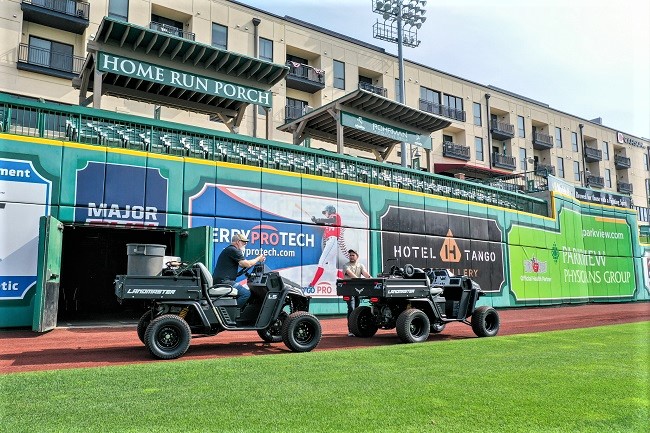
While supply-chain issues haunted numerous established brands over the past couple of years, parts availability and shipping woes didn’t seem to impact many of these second-tier brands experiencing surging sales, as container after container filled with vehicles continued to arrive unabated at U.S. ports by these importers/distributors.
In 2021, for the first time, the top 10 purveyors of UTVs – brands like Polaris, Can-Am, Kawasaki and Honda – were joined by lesser-known names, including Hisun and CFMoto. Also experiencing remarkable growth were importers/distributors like BMS Motorsports, Coleman and Massimo.
For 2022, Hisun, CF Moto and Massimo again cracked the top 10 brands. How, and why?
PPM says it believes growth in a few of these brands correlates with their availability at big-box retailers, which have in recent years become a major outlet for lower-cost vehicles that couldn’t be found at traditional multi-line powersports dealerships.
Home Depot retails multiple models sourced from Hisun; Lowe’s retails product from Hisun and Massimo; Tractor Supply stocks multiple models of Coleman, BMS Motorsports and Massimo; and Rural King offers product from Hisun.
According to PPM analysis, UTV retail sales from Tier 2 brand suppliers through big-box retail locations grew substantially last year, from what had been an average of 5-10,000 units in recent years to nearly 30,000 units in 2021 and more than 44,500 units in 2022 as consumer demand for UTVs exceeded what traditional major manufacturers could supply.
Neighborhood Electric Vehicles
Another segment that benefitted once major OEMs became unable to supply UTV product to hungry consumers was the Neighborhood Electric Vehicle (NEV) market, which includes street-legal electric golf cars modified to serve as Personal Transport Vehicles (PTVs) limited to 19 mph or Low-Speed Vehicles (LSVs) limited to 25 mph.
Demand for UTVs was so high during the height of the Covid-19 pandemic, PPM in their research reported that many consumers searching for hard-to-find lower-cost models instead opted for the purchase of NEVs, outfitting them with lift kits and off-road wheel/tire sets.
NEV sales for 2022 totaled approx. 305,000 units, up an impressive +44% from 212,000 units in 2021, which was up +51% from 140,525 units in 2020. This signifies nine years of growth for the market, which experienced a low of 69,475 units in 2013.
While leading companies in the golf car market – E-Z-Go, Club Car and Yamaha – play a key role in NEV production, here too we find Tier 2 importers/distributors making waves in the market with product sourced from China. Among the leading newcomers are brands like EVolution Electric Vehicles, ICON EV and Bintelli, each of which has been making great strides in market share.
Up until 2021, nearly all the NEV volume was going through Golf/Golf Accessory dealerships. With the rapid growth of the market in the last 24 months, PPM estimates that perhaps 20-30% of the NEV sales increase went through Powersports dealers and other independents like Marine and RV retailers.
What’s Next?
Dealer inventories are building, higher interest rates are raising purchase costs, consumer confidence is falling, and the market has experienced a two-year cooling period. What’s next?
Of the nearly 5,000 dealers surveyed by PPM for its annual report, an overwhelming majority suggested UTV inventories have increased, albeit incrementally, since the product shortage experienced in 2020 and 2021. “It really depends which brands you’re talking about,” a Honda, Kawasaki, Yamaha and CF Moto retailer recently told PPM. “One of our brands has been delivering product unabated throughout this whole ordeal, and the other three have picked up the pace again.
“So, yes, we’re seeing more product coming in but it’s not like we have a dozen different models from one brand just waiting for a customer.”
A marked percentage of surveyed dealers also spoke of a cooling in the surge of consumers who sought out powersports vehicles during the height of the stay-at-home / social distancing orders that resulted from the pandemic.
“During Covid, we essentially became order-takers,” a Honda and Yamaha dealer recently told PPM, mimicking what others have proclaimed. “We’d have one unit come in and it’d be gone within a day or two whether it was the model the customer was looking for or not. Anyone else who wanted a unit had to order it and wait for who knows how long.
“Now, with deliveries resuming, we’re not seeing that fevered pitch anymore. Sure, we have customers continuing to query us, but it’s almost like everyone who wanted one got one.”
PPM uses economic data published by various sources on the U.S. economy to help build its forecast. One such source is Blue Chip Economic Indicators – a panel of 50-plus economists employed by some of America’s largest and most respected manufacturers, banks, insurance companies and brokerage firms.
Annualized GDP grew at a +2.1% rate in 2022, down from +5.9% in 2021 – which was the fastest pace since 1984. Looking forward, the Blue Chip panel says it believes GDP will retract, managing only +1.2% in 2023 and +0.9% in 2024.
Rising interest rates and elevated inflation are anticipated to severely restrain personal consumption expenditures – the largest expenditure component of GDP. Notable: Inflation surged +6.8% in 2022 – the largest increase since 1982.
The policymaking Federal Open Market Committee (FOMC) has been fighting record-high U.S. inflation that took off during the Covid-19 pandemic. A combination of recent interest rate hikes, slowing economic growth and a tightening credit market has helped cool off price gains, although experts agree that the job is not quite complete.
In June 2023, after 10 consecutive interest rate hikes since Mach 2022, the Fed took a breather by leaving the target rate unchanged at a range of 5%-5.25%.
“Inflation data received over the past three months show a welcome reduction in the monthly pace of increases,” said Fed Chairman Jerome Powell. “And while recent developments are encouraging, we will need substantially more evidence to be confident that inflation is on a sustained downward path.”
Consumer Confidence
PPM also looks at consumer confidence. The monthly Consumer Confidence Survey®, based on a probability-design random sample, is conducted for independent, global research association The Conference Board by Nielsen.
“Consumer confidence declined in May as consumers’ view of current conditions became somewhat less upbeat while their expectations remained gloomy,” said Ataman Ozyildirim, Senior Director, Economics at The Conference Board. “Consumers continued to view inflation as a major influence on their view of the U.S. economy, and their expectations remain elevated, but stable.”
Asked about their expectations six months hence, consumers’ optimism about business conditions outlook declined: 12.9% of consumers surveyed in May 2023 expect business conditions will improve, down from 20.9% in February 2023; 20.6% expect business conditions to worsen, up from 19.9%.
But consumer confidence isn’t the only factor The Conference Board investigates. According to the organization’s recent CEO Survey, more than 1,100 business leaders surveyed in both the U.S. and globally say slow growth and a recession are their #1 external worry of 2023. Inflation ranks as their second biggest concern, followed by higher interest rates. In 2022, borrowing costs were low on the worry list, ranking 25th.
Further, the survey also found that most executives don’t think stronger economic growth will return anytime soon: 51% of CEOs worldwide—and 60% of U.S. CEOs—expect a tepid year ahead, with their economies only picking back up by late 2023 or mid-2024.
Given the external forces shaping the economy, PPM projects 2023 North American retail UTV sales to, at best, be essentially be flat with 2022.
Greg Boeder is senior partner and Guido Ebert is senior analyst – powersports for PPM. Power Products Marketing (PPM), a Minneapolis-based research firm, has curated its Powersports retail sales data for more than 20 years. The firm provides detailed market share data and research services to the global power equipment industry. Markets covered include Powersports, Diesel Pleasure Boats and Commercial Vessels, Farm (AG) Machinery, Construction Machinery, Lawn & Garden Equipment, Generator Sets and Underground Mining Equipment.

